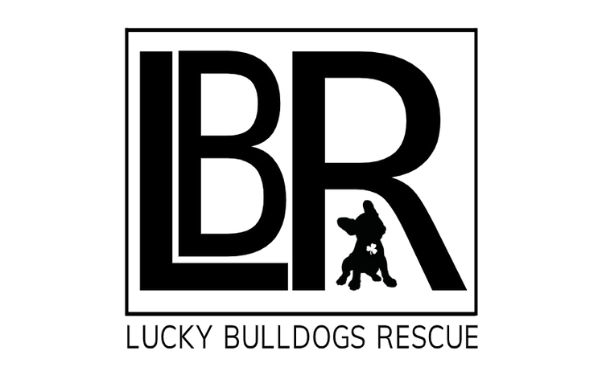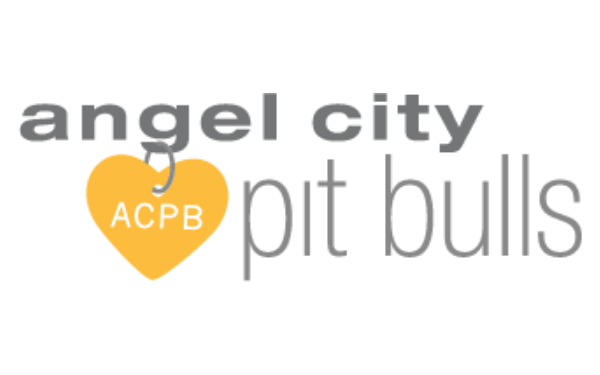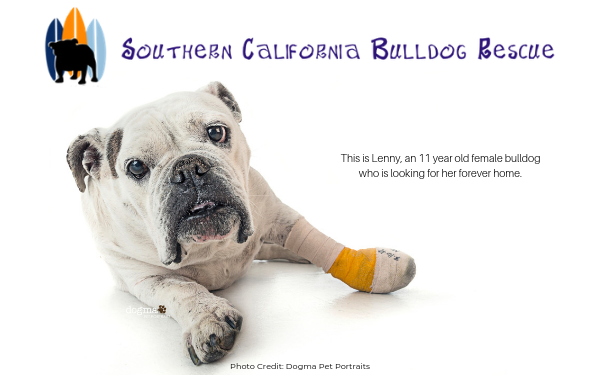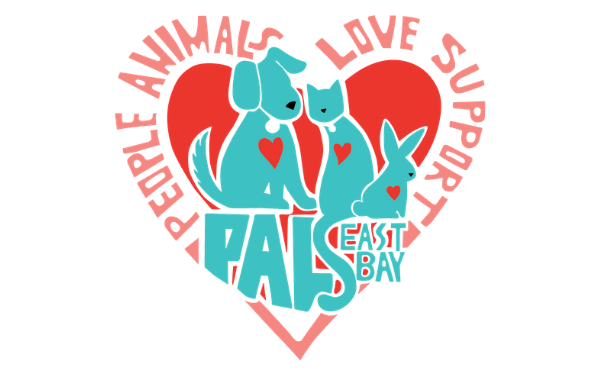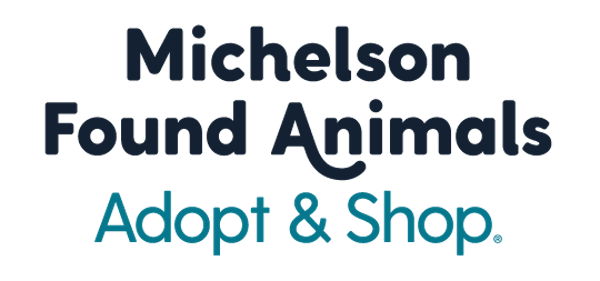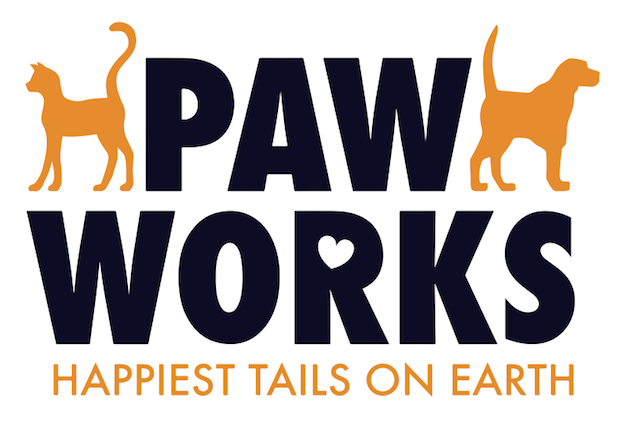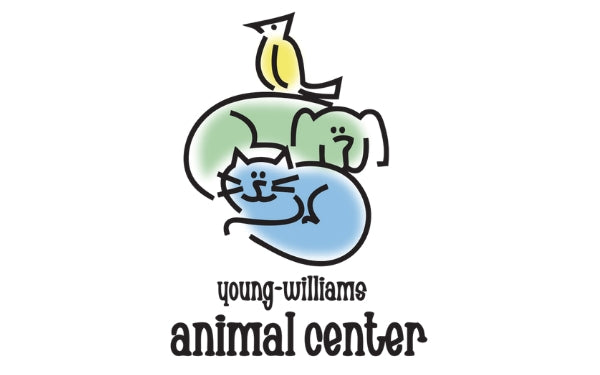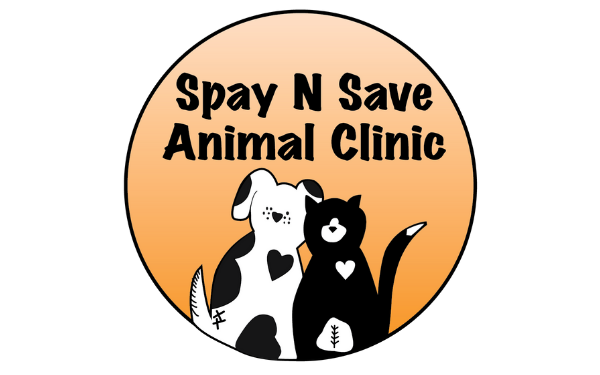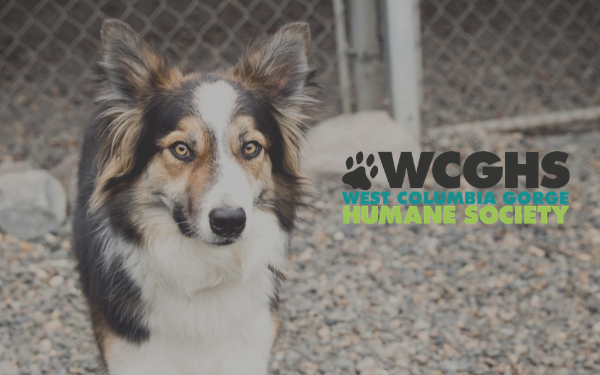Rescue Of The Month
Lucky Bulldogs Rescue - Rescue of the Month, February 2020
We're very excited to be working with Lucky Bulldogs Rescue. These amazing organization focuses on rescuing English Bulldogs, French Bulldogs, Pugs, Boston Terriers, and other short-nosed breeds aka "smushie faces". Learn more about Lucky Bulldogs' work below.
Tell us about how Lucky Bulldogs Rescue was started? Is there a personal story behind your mission?
Lucky Bulldogs Rescue was started by a group of experienced volunteers who had all worked together with other rescue organizations in the past. All had ideas of how to streamline the adoption and foster processes and agreed that the top priority for a rescue should be high-quality care for each dog. They decided to team up and shortly after, Lucky Bulldogs Rescue was born.
What are the biggest challenges LBR faces?
As with most rescues the biggest challenge is getting funds for all of the health issues we encounter in rescue dogs, in addition to there being more dogs in need than foster homes! We encourage anyone interested in opening their home to dogs in need to fill out a volunteer application at the rescue of their choice. We try to use creative ideas to fundraise such as our Dad Bods & Rescue Dogs calendar, auctions, naming fundraisers in addition to just getting the word out and requesting sponsorships and tax deductible donations. Assistance from volunteers is always welcome in any area, not just fostering!
Running a rescue and helping dogs can be tough, both emotionally and physically. Can you share a tough experience or trying moment for Lucky Bulldogs Rescue, and what you did to overcome it?
There are a number of items that can be incredibly difficult in rescues. Seeing abused animals is always heart-breaking. We have taken in dogs who we are grateful they have been released to our care.
We will never judge a family who surrenders a dog to us because they are no longer able to care for them due to any financial situation. This happened in early 2020 with a family who reached out to us. Our volunteer picked up the dog from the family who was heartbroken they could no longer care for their family pet. Due to the severity of the issues, the dog passed away minutes into the intake transport. We are a family, the dogs are our family and we were all distraught.
Do you have a network of fosters in the area that help care for the dogs or do the dogs stay in a facility?
Our rescue is 100% foster-based. The majority of our fosters are located in the midwest, but we are lucky to have homes across the country which allow us to save dogs regardless of their location. The core of our mission is to rescue as many dogs as we can from the commercial breeding system and private surrenders due to behaviors and/or serious medical issues. Most retired commercial breeders require time and patience in order to learn how to trust humans and live their life as an adored pet. By utilizing foster homes, we are able to ease the transition from breeding facility to forever home.
Where does your primary financial support come from?
The vast majority of our financial support comes from the generosity of individual donors. We were able to get a strong start at the end of 2019 with the success of our Dad Bods & Rescue Dogs calendar as seen on the Hallmark Channel, Daily Mail, Bored Panda, PopSugar, Scary Mommy, Rover.com, Cesar Millan, Ozzy Man Reviews, The Dad, and many other well-known websites. We also run Facebook charity auctions with donated items.
How many dogs on average do you place in their forever homes annually?
Our rescue is less than 6 months old, we were founded in the end of October 2019. In that short time we have found forever homes for four lucky dogs. We currently have three dogs we are reviewing applications for, three we are currently accepting applications for, and eighteen more smushies currently in foster.
For those reading this, if they want to help fight the good fight, what can they do to help?
We are always looking for volunteers to support our mission. The biggest limit to how many dogs we can save is whether or not we have a home to place them in and a way to get them to that home. If you are reading this and want to help, please fill out this form to become a volunteer! We welcome volunteers from all areas and can use help with many responsibilities such as transportation, fundraising, and administrative work. If readers are unable to volunteer, please consider donating and even sharing social media posts to help spread the word. If smushy faces are not the readers thing, please find a rescue for your dog of choice and see how you can help out! Volunteers and Donors are the foundation of rescues!
What are the plans for the future of LBR?
LBR is just getting started! We hope to rescue and rehabilitate as many French Bulldogs, English Bulldogs and other brachycephalic breeds by providing quality care and sanctuary in a family environment until loving forever homes are found as we are able to! We hope to spread the word and bring awareness to the fact that you can get in demand breeds in rescue, but also raise awareness of the potential health issues that these breeds can have and educate potential owners and owners about those. We hope to grow our volunteer and donor support base in order to help do this!
If you want to support LBR, please donate now. You can also follow them on Facebook.
Angel City Pit Bulls - Rescue of the Month, December 2019
We're so excited to finish 2019 with such an amazing Los Angeles-based rescue organization. Angel City Pit Bulls has been around for nearly a decade and finds home for more than 200 dogs every year. Learn more about their work below and make sure to donate to this awesome rescue.
Tell us about how Angel City Pit Bulls was started? Is there a personal story behind ACPB’s mission?
ACPB was started in 2010 while the founders were working at the South LA Shelter. It was there where they witnessed firsthand the overpopulation as well as the high euthanasia rates of pit bull type dogs. They knew that they had to help in a bigger way, especially when it came to the dogs that were most at risk.
What are the biggest challenges ACPB faces?
ACPB is 100% volunteer run – absolutely no one gets a salary. Because of this we rely on outside funding as well as our amazing volunteers and fosters to keep our program going. Our biggest challenge are our limits in resources to ease the overcrowding of LA shelters. Donations, volunteers and fosters are crucial to our organization and we are in a constant effort to recruit more people to be involved.
Running a rescue and helping dogs can be tough, both emotionally and physically. Can you share a tough experience or trying moment for the rescue, and what you did to overcome it?
Now that we’ve expanded our “Angels Program”, where we take in hospice dogs, it’s been very tough to say goodbye to those dogs. There are times when we get them from the shelter and they are in such bad condition that we think they have only a small time left. Through a lot of comfort and love from our volunteers and fosters as well as the amazing skill and care of our partner vet, Dr. Zoe Ramagnano at SNPLA, most of the time the expected life spans of our hospice dogs get quite longer, which leaves even more time to get attached.
We’ve found that the best way to deal with this is to include any volunteer who would like to be a part of the end of life process for our hospice dogs. This includes making decisions on their behalf and being there to comfort the dogs when the time comes. We also do things to celebrate the dogs before they leave us, most recently throwing a backyard barbecue for our beloved hospice dog, Buddy, so that he can really know how loved he is. This also gives our volunteers an nice opportunity to say goodbye.
Do you have a network of fosters in the LA area that help care for the dogs or do the dogs stay in a facility?
While our foster program is still the backbone of ACPB, having more than 60 dogs in foster care on a regular basis, as of March 2018 we were lucky enough to be gifted a portion of the previously shuttered South LA shelter. This facility has enabled us to have a safe space for our dogs to be evaluated and decompress after leaving the shelter before we place them into a proper foster home.
This facility, along with our partners at the Spay and Neuter Project who are also housed there, has also allowed us to take more medical cases, dogs who need larger procedures that would be too great for the LA City Shelters to fund. We have also been able to start an ACPB Angels program, where we take in the elderly and dying animals that have been left at the shelter and give them the best rest-of-life experience we possibly can.
Where does your primary financial support come from?
We depend on individual donations. We do fundraising events throughout the year, our biggest one being the LA Marathon team who raises over $100k every year to support ACPB. They are incredible!
How many dogs on average do you place in their forever homes annually?
We generally place around 200. In 2018 we placed 225 dogs. We are on par to do that many in 2019 as well!
For those reading this, if they want to help fight the good fight, what can they do to help?
Donate, of course, but we would also LOVE you to be involved. We have many different ways to volunteer that will fit into any schedule and lifestyle. The team of volunteers at ACPB are a fun and caring group and you will find like minded friends who are there to just help the dogs. We also always need fosters – so if you need a blocky headed goofball in your life please let us know. We have a few that are waiting for you!
What are the plans for the future of Angel City?
Pretty simple. Rescue as many dogs as possible!
If you're interested in helping Angel City Pit Bulls, donate today or like them on Facebook and follow them on Instagram.
Golden State German Shepherd Rescue - Rescue of the Month, November 2019
For the month of November we're excited to name Golden State German Shepherd Rescue as our Rescue of the Month! This GSD, or German Shepherd Dog-specific rescue goes to any length to help the dogs they rescue. Learn more below about their history and the amazing work they do every day.
Tell us about how Golden State German Shepherd Rescue was started?
There were five original founders of Golden State. All of us were in a larger rescue group but certain shelters in the Bay Area and in the Central Valley were not getting the much-needed attention and service and since we lived in these areas, we decided to break from the other organization to start Golden State German Shepherd Rescue.
Each founder contributed personal funds to get Golden State rescue up and running. Our first fundraiser was held in a lovely commercial building. The owner waived the rental fee and most of the services were either donated or discounted. We had a few large sponsors and with the generosity of the building owner, vendors, and donations we were able to clear a substantial amount which got us on our feet and enabled us to begin operating.
That was back in 2009 and we continue to operate today.
Is there a personal story behind your mission?
I believe the personal story is the same for all rescue groups and for all volunteers. We love this breed and we try to save as many dogs as possible and give them the love and attention that they deserve and hopefully help them forget about the cruelty many of them have experienced in their life.
What are the biggest challenges GSGSR faces?
Some of the biggest challenges that GSGSR faces is the sheer number of German Shepherds within our area shelters. At times there can be up to 50 GSDs in ONE shelter alone. That's one shelter out of hundreds in the areas that we work in. Also, finding dedicated volunteers that are committed and in it for the long haul seems to be a difficult task. GSGSR is a very small organization, and sometimes having the lack of manpower to help with running all the tasks on a daily basis can really hurt us. Having a lack of foster homes is also a giant roadblock.
We are a foster based rescue, that needs the availability of foster homes so that we can give our dogs time to decompress and heal from their previous life. Finding a foster home for a German Shepherd isn't always the easiest thing to do. German Shepherds are not easy dogs, and require a lot of time, patience and work, hence the overabundance of GSDs in the shelters.
Our biggest challenge is the one that we cannot control. Backyard breeding has become an epidemic in this state, and not just for Shepherds. So many dogs sit and then die in shelters, because of the increasing numbers brought in. Shelters cannot keep up. People need to do their research when buying a puppy. Make sure it's a reputable breeder with good conditions for the dogs. We can't stop people from buying dogs but hope that we can educate people to the fact that rescue dogs are amazing. We have purebred GSDs all the time, that were bought as puppies and returned once they realized they were too much to handle.
Running a rescue and helping dogs can be tough, both emotionally and physically. Can you share a tough experience or trying moment for GSGSR, and what you did to overcome it?
It always tough on volunteers, especially the evaluators, who go into shelters. To see dogs that have been severely neglected and possibly abused is extremely heartbreaking. Baylen, a 3 month old puppy, who was surrendered to the shelter, with his left eye hanging out of its socket (that ultimately had to be surgically removed) and TJ, a two year old male, who was brought into a shelter with a broken leg. Everyone thought he had been hit by a car but his foster family believes he was severely abused and his leg was possibly broken intentionally.
We have so many other stories similar to Baylen’s and TJ’s...to numerous to count. And then there are the dogs we cannot rescue for various reasons (bite history, aggression, severe separation anxiety, etc.). To have to walk away from any dog affects volunteers to our core. But we all do the best we can to try to save as many dogs as possible, sometimes to the detriment to our emotional and physical health. But the payoff is, when we see these dogs go to a family THAT PICKED THEM, it does make what we do worthwhile. That’s what keeps us going!
Do you have a network of fosters in the Central Valley that help care for the dogs or
do the dogs stay in a facility?
We do have a network of foster homes throughout the Central Valley, Sacramento Valley, and Bay Area. We like to have our dogs in a foster home so that we can evaluate their behavior inside of a home. How do they interact with the humans? How do they interact with the other pets? Are they food motivated, are they possessive? How do they walk on leash?
We have our fosters take notes on EVERY noticeable behavior trait for the dogs in their home. This way it makes it easier for us to place the dog with the right adoptive family. And on several occasions, we have had some challenging cases, but our foster homes stayed true to the dog, worked with them, and worked with trainers until their forever homes could be found. Foster homes are crucial to the development, safety, and adoptability of our dogs.
Where does your primary financial support come from?
Our primary financial support comes from our network of donors. We have been around for 10 years and have developed a strong bond with our volunteers and donors. We need this support to help keep us running. The costs of rescuing one dog typically exceeds the adoption fee. Our donors help us to cover the major medical expenses (spay and neuter surgeries) as well as they help out with any unforeseen accidents & related surgeries, such as amputations, eye removals, and the like.
We are lucky to have sponsors that love German Shepherds and tend to donate large amounts. We will also occasionally hold donation drives if we come across a dog that has a major medical need. Our social media warriors really help to pitch in when we need it most.
How many dogs on average do you place in their forever homes annually?
Over the past 10 years, we have rescued and placed about 800 dogs into forever homes. Our goal is now to do at least 60 per year. And another goal is not just to place dogs but keep our returns to a minimum.
For those reading this, if they want to help fight the good fight, what can
they do to help?
Adopt don't shop! Volunteer. Foster. Shelters and rescues are understaffed and over worked. Go out and help out with a rescue that speaks to you as well as your local shelter. Spend time with dogs who have been discarded and left behind.
What are the plans for the future of GSGSR?
Although we don’t know what the future holds, our goal is to find a larger network of foster homes that can help us rescue more dogs. Our goal at GSGSR is to work with adoptable dogs that we know will be a good fit for the families coming to us. We have such a great connection with our adopters and really thrive on creating new families. It's about saving dogs and making people happy.
The quote "who rescued who?" really does apply to many of our adopters. Seeing these lives change when they bring in a new family member makes us so happy and proud to do what we do, and we hope to continue in this manner for a long time!
If you're interested in helping Golden State German Shepherd Rescue, donate today or like them on Facebook and follow them on Instagram.
Southern California Bulldog Rescue - Rescue of the Month, September 2019
This month we're honored to name Southern California Bulldog Rescue as our Rescue of the Month! This bulldog-specific rescue provides shelter, re-homing assistance, and funds for medical treatments. Their bulldogs come from animal shelters, other rescue groups, and owners who wish to surrender their purebred bulldogs, and this incredible organization helps find suitable homes. Learn more below about their awesome work.
Tell us about how Southern California Bulldog Rescue was started? Is there a personal story behind your mission?
It started with a group of a fellow bulldog adopters about 12 years ago that had been volunteering with another Bulldog rescue program that had separately decided to not accept senior or special needs Bulldogs. There was a backlash with the established rescue's decision and many felt unfair to the senior bulldogs, those bulldogs that might have special needs and those Bulldogs that perhaps were not a beautiful as a show dog.
The group of friends, all still actively involved decided to start their own Bulldog rescue with a mission to save 'all Bulldogs', regardless of age, medical conditions or question about pure breed status. The current core of volunteers and directors have a different mission in that we believe that "No Bulldog should be left behind' in a shelter because of being too old, having medical issues that can be difficult to cure or treat, and that even those Bulldogs that are no show quality Bulldogs deserve a right to live with a family.
What are the biggest challenges SCBR faces?
Our biggest challenges is having the resources to provide medical care and safe homes for the dogs with rescue. While vets do offer some discounts and assistance - the cost of medical care to assure all dogs are spayed or neutered before adoption, get current on shots, microchipping, treatments for ear infections, skin infections and eye infections adds up quickly for our rescue program. Bulldogs that make into rescue usually come because their care has been so neglected that owners have abandoned the dogs as "lost causes" or too expensive now - so leave at shelters. People don't give away happy and healthy Bulldog puppies, they abandon or give away senior and sick Bulldogs.
We have a hard time finding foster homes that can locally care for the Bulldogs once they are rescued. Rescued Bulldogs usually need to see a vet at least once a month, and sometimes multiple times a month to keep on the road to recovery. Our foster homes need to be not only in state, but literally a reasonable drive to one of our vets to get scheduled care. Offers to foster that are very far away from where the dogs need to rescued from and vets they need to see are kind, but hard to take advantage of because of location.
Running a rescue and helping dogs can be tough, both emotionally and physically. Can you share a tough experience or trying moment for you, and what you did to overcome it?
The walking into a shelter to save one Bulldog and seeing so many other dogs that need help or saved also is draining beyond belief. It's easy for people to sit behind computer screens 'pushing' the image of one pet in need around, trying to find a rescue or adopter for that dog. I went to a local shelter to pick up a 13 year old Bulldog that appears to be blind, down to skin and bones since he couldn't find a food bowl and crying out of fear being in a shelter with other dogs barking around him. The old guy was just starved and scared in the shelter, a place he didn't belong and where his owners have left him to die.
As soon as I saw him on the Internet, I knew I would get him and in the shelter I felt better knowing I would walk out with him with me. Things would be better for him now. Just because I know there is a Bulldog in the shelter I want to rescue doesn't mean I don't have to walk past rows of cages with other dogs that need rescue too. The walk in the shelter and seeing all the other dogs in need that I wasn't sure someone would come 'save' or adopt is heartbreaking. They all paw at the same type of gates, try to angle to get your eye contact and bark for attention. All these other dogs are just as confused and scared as the one I took out. There are sounds, smells and eye contact you make with other animals in the shelter that you can't easily forget or likely will forget.
You don't overcome it or forget it. I think I manage it by remembering I saved one today and that likely made space open in the shelter for another dog that needed that space too. That the expenses and time I give this dog I took, should mean the shelter can spend what they were to provide him on another dog in need. I think from my experiences walking into shelters, waiting and taking one dog ( sometimes two) gives me insight to what I dislike about human nature with the way some treat pets.
Do you have a network of fosters in the Santa Ana area that help care for the dogs or do the dogs stay in a facility?
We would work with a network of dedicated volunteers that do everything from also going to shelters, fostering Bulldogs in their homes, making office visits, providing care are home, help find homes and manage to even assist with fundraising efforts. We also use a couple kennels services to keep some Bulldogs until foster or adoptive homes are found. It's really volunteers that have the same mind set and make time in their own lives to help the Bulldogs that make it all happen.
Where does your primary financial support come from?
We are 100% not for profit and volunteer staffed. We have fund raisers on a regular basis, some larger planned annual fund raisers and depend on donations. We have some grants that help too.
How many dogs on average do you place in their forever homes annually?
On an annual basis we rescue and place about 300 dogs a year. But ours is not just 'rescue and rehoming', a large part of what we do is help owners keep their bulldogs in with the family. We donate food to families that need help feeding their dog if the family has a short term need. We help families find needed medical care and hospice for dogs the family can no longer care for in a way that is safe.
For those reading this, if they want to help fight the good fight, what can they do to help?
We are one of many Bulldog rescue programs located in the United States and on a worldwide basis. Bulldogs aren't unique to just Southern California and there are likely Bulldogs in need in someone's own area that need to be found and helped. There are dogs of all breed and mixes in shelters that need help too, those should be the first dogs people should wan to 'put their hands on to help'.
If after they think they have done enough locally or still compelled to help our rescue efforts, we also need all the help we can get. We work on fund raisers on almost a weekly basis to cover expenses for the dogs we get into rescue. We are constantly networking to find prospective adopters and foster homes for the bulldogs in need. We seek opportunities to get donations of needed supplies for the bulldogs, such as food, leashes, medicated shampoos and shelter.
What are the plans for the future of Southern California Bulldog Rescue?
SCBR will likely continue to move forward as it has in the past for as long as their is a community of volunteers that see Bulldogs in need. When we first started we are only able to help Bulldogs in the Orange County and surrounded counties that made up most of the metro Southern California area.
Over the years we have stretched farther south with volunteers to the Mexican board and sometimes over that into Mexico, north into the central valley's of California and east into neighboring states with more volunteers helping in pocket areas. I don't see an end to SCBR, but hopefully see others start their own rescue programs.
If you're interested in helping Southern California Bulldog Rescue, donate today or like them on Facebook and follow them on Instagram.
PALS East Bay - Rescue of the Month, August 2019
Michelson Found Animals Foundation - Rescue of the Month, July 2019
Paw Works - Rescue of the Month, June 2019
Paw Works was founded on January 14, 2014 by Chad Atkins and Christina Morgan. Chad had previously been running his own Doggy Day Care and Boarding business when his client, Christina, had approached him about helping out at a local animal rescue which she was a board member of.
Young-Williams Animal Center - Rescue of the Month, May 2019
Spay N Save - Rescue of the Month, April 2019
Although we call it our Rescue of the Month program, we also work with non-profit animal welfare organizations. Founded in 2011, Spay N Save is an award-winning non-profit spay and neuter clinic based in Longwood, Florida. Their mission is to reduce pet overpopulation and euthanasia by offering high-volume, low-cost spay & neuter surgeries. We sat down with Spay N Save's Executive Director, Joanne Montchal, who shared how this amazing organization is truly making an impact.
Tell us about how Spay N Save Animal Clinic was started. Is there a personal story behind your mission?
Spay N Save’s founder, Phyllis Ayoob, had been rescuing cats through her non-profit CATS-CAN, Inc. Realizing that one cannot make a big enough impact on pet overpopulation solely through adoptions, she & her Board of Directors decided to open a low-cost, high volume. spay & neuter clinic.
Starting our own clinic and not having to rely on finding local vets who could handle the great demand for sterilization was one more piece of the puzzle to saving animal lives.
What are the biggest challenges Spay N Save faces?
Thee hardest thing is not being able to reach some of the people who really have no resources to truly care for their dogs. We occasionally have grants to cover the expenses so these folks can get vet care for their pets. We even provide transportation when needed. This way they are able to keep their pets and not have to give them up.
We also do Healthy Pet Wellness Clinics one day a week for affordable vaccines & basic care.
What kind of impact have you seen as a result of operating your clinic and offering affordable or subsidized spay and neutering services?
Spay N Save’s biggest impact has been seeing a steady decline in the animals ending up at our local shelters. The numbers of impounded dogs & cats are going down so the ones that do end up at the shelter have a better chance of getting adopted.
Where does your primary financial support come from?
Primary financial support is our low-cost service fees at 90%, 5% donations & 5% grants.
How many surgeries do you conduct annually?
Last year we did 9,890. Each year we have increased surgeries and our goal this year is to perform over 10,000.
For those reading this, if they want to help fight the good fight, what can they do to help?
Of course, donations really help us keep our fees as low as possible and allows us to subsidize cost for someone unable to pay. We also need volunteers to keep the daily tasks unrelated to surgeries going so the staff can concentrate their efforts on surgeries.
What are the plans for the future of Spay N Save Animal Clinic?
In the future, we may need to look for a larger building for Spay N Save so we can increase our outreach to people & their pets.
If you want to follow Spay N Save's work, make sure to like them on Facebook, and also donate today.
West Columbia Gorge Humane Society - Rescue of the Month, March 2019
It is an honor to name the West Columbia Gorge Humane Society as our Rescue of the Month for March. Their mission is to end unnecessary euthanasia of all healthy or treatable companion animals in our community and find them permanent, loving homes.
We sat down with WCGHS's Volunteer and Programs Manager, Cathi Parent, who shared some great insights into the incredible work this organization does every day.
Tell us more about the West Columbia Gorge Humane Society.
West Columbia Gorge Humane Society (WCGHS), established in 1994, is an independent, 501c3 nonprofit, animal shelter located in Washougal, WA. What began as a small, private, home-based cat rescue many years ago, has grown into a site-based animal shelter and extensive foster network, that now helps over 500 homeless cats and dogs find loving new homes each year. WCGHS operates both a cat and dog shelter (two separate buildings), and offers a variety of programs and services to support pets, and their people, throughout the community.
Animals come to WCGHS through owner surrender, transfer from partner organizations both in-state and out-of-state, and Animal Control. WCGHS is contracted with the cities of Camas and Washougal, WA to provide animal care services to impounded dogs found within the city limits of both cities. We have dedicated staff and volunteers who care for our animals and manage our programs. Like all shelters, we have limited space and resources, but when we accept an animal into our care, we make a lifetime commitment to its welfare.
What are the biggest challenges WCGHS faces?
One of our biggest challenges is raising enough money to cover our medical expenses, which, for any one animal, can range from a few hundred dollars for routine vaccinations and spay/neuter, to thousands of dollars for a life-saving surgical procedure. As a shelter committed to a no-kill mission, we do not euthanize healthy or treatable animals regardless of time, space, breed or age. That means, we work with each and every animals’ individual needs regardless of the cost, in order to prepare them for placement into a loving new home.
With over 500 animals a year needing some degree of medical care, our expenses add up quickly and average approximately $100,000 annually for this alone. The most distressing situation is when we take in an animal who has multiple medical issues that need to be addressed in order to be placed up for adoption. The costs for that one animal can sometimes reach up to $10,000, especially when complications arise and the animal needs emergency treatment or additional surgeries. Money raised through fundraisers, donations and sponsorships help pay for some of these more costly medical procedures that put a strain on our budget, and can mean the difference between life or death for a deserving animal.
Running a rescue and helping animals can be tough, both emotionally and physically. What were two tough experiences or trying moments for WCGHS, and what was done to overcome them?
Spirit: One evening back in June of 2018, a tiny kitten was found in a box, abandoned and clearly suffering from severe, life-threatening injuries. We immediately brought her to the veterinarian for evaluation. It broke our hearts when we found out that our newest rescue had a pelvis that was fractured in four places and several broken ribs. This tiny kitten was only 4 weeks old and had no use of her back legs or control over her bladder or bowel movements.
These injuries, in combination with her age, may have resulted in humane euthanasia at many other shelters, but we saw this little girl had a big personality and a will to live, so we named her “Spirit” and decided to give her a chance. After emergency surgery, she was placed in a special foster home for recovery. Amazingly, within a few weeks, she was walking again, and had full control over her bladder and bowels.
Shortly after being cleared for adoption, a wonderful family came in and decided to not only adopt Spirit, but also another kitten for her to play with! If you saw her today, you would never know how difficult the beginning of her life was. Spirit is a kitten who will forever remind us why we do what we do. Her success, and others like her, keep us going and help us deal with the not so nice side of animal rescue.
Miracle: Miracle, a senior poodle, was discovered lying still in a bush, by a woman out on a walk, in the Spring of 2017. The woman scooped her up, wrapped her a blanket and brought her to us. Miracle was in very bad shape; underweight, listless, blind, deaf, her fur was dirty and matted, and her nails were so long they curled into her paw pads. Most likely Miracle had been abandoned after suffering for a very long time from severe neglect. Upon examination, in addition to her obvious health issues, she was diagnosed with a heart condition, tumors and severe dental issues.
Miracle is another example of an animal that may have been euthanized at any other shelter due to her age and complex medical issues. But something told us to clean this old girl up and give her a chance, so we put her on antibiotics and waited to see if her infections would clear up. They did and she started showing signs of improvement, so we went ahead with surgery to remove her tumors and several of her teeth in order to clean up her mouth. Miracle eventually recovered and showed us that she was worth every penny. She was still an old girl, assumed to be 14, but she was feeling better, loved and hadn’t been left to die in a bush.
We knew the chance of Miracle being adopted at her age was minimal but we found a family for her that was experienced with old dogs and had worked as a hospice foster in the past. It was the jackpot for Miracle and allowed her to live the rest of her life in a happy, loving home with other dogs and walks with the family in her own personal stroller! She made an appearance with us in the Camas Days Parade the summer of 2017 in her stroller, too! Miracle lived for another 10 months until she passed away peacefully in her sleep.
Does WCGHS have a network of fosters that help care for the animals or do most of the animals stay in the facility?
We have a robust foster care program for both dogs and cats. Without which, we would not have the lifesaving reach we do currently. Our dedicated foster volunteers aid by opening their homes to dogs and cats when they are in need of short, temporary or long-term care and attention. Animals in need of foster may be recovering from medical procedures, pregnant, kittens or puppies who are too young to be in the shelter environment, or animals who need special socialization and training, or are not thriving in a shelter setting due to fear and anxiety. Placing an animal in foster care doubles our life-saving capacity, as it opens up space for another homeless pet to come into the shelter and receive the care and shelter they need while they await adoption.
Where does WCGHS’ primary financial support come from?
Our primary financial support comes from individual and corporate donations, adoption fees, grants, events, sponsorships and other fundraisers.
How many pets on average does WCGHS adopt out annually?
The number of adopted pets has increased each year. In 2017, we adopted 482 pets. (81 dogs and 401 cats). In 2018, that number went up to 560 pets adopted (101 dogs and 455 cats)!
How can people help WCGHS?
Adopt. Donate. Volunteer. Do any, or all, of those three things and you can make a difference in the lives of animals in need in your community! As an independent, nonprofit organization, West Columbia Gorge Humane Society relies on donations and volunteers to continue its life-saving mission. Every dollar raised through donation, or saved through volunteer manpower, helps save lives! And, of course, providing the warmth and comfort of your home by adopting a pet in need not only saves one life, but two, by opening up a space for another animal in need to come into our care.
What are the future plans for WCGHS?
The future is bright for West Columbia Gorge Humane Society! We plan to double our life-saving capacity to 1,000 animals in the next two years, and, we have increased our collective impact in Southwest Washington by partnering with two other local Humane Societies who share the same vision of making Southwest Washington a more compassionate community for both pets and their people. The Humane Southwest Network (HSN) is a coalition between West Columbia Gorge Humane Society, the Humane Society of Southwest Washington (HSSW), and the Humane Society of Cowlitz County (HSCC).
It is unique in nature, as it is based on a shared services model that allows for sharing resources among partners. By minimizing the duplication of efforts, each organization saves time, money, and energy so that more time, money and energy can be spent saving lives and providing resources to the community. At this time, our shared services include: marketing support, accounting services, volunteer training, community outreach, veterinary care, and animal transfers between HSN partners and out-of-state shelters.
If you want to follow West Columbia Gorge Humane Society's work, make sure to like them on Facebook, or check out their available pets and donate today.

